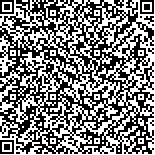肖长林,潘翠环,陈艳,叶正茂,方丽婷,罗丽娟,耿艳娟,罗永胜.肌电触发机器手对脑卒中早期患者手功能康复的影响[J].中华物理医学与康复杂志,2018,40(2):100-105
扫码阅读全文

|
| 肌电触发机器手对脑卒中早期患者手功能康复的影响 |
| A robot exoskeleton can improve hand function early after stroke |
| |
| DOI: |
| 中文关键词: 机器手 脑卒中 肌电触发 手功能 外骨骼 |
| 英文关键词: Hands Robots Stroke Hand motor function Exoskeletons |
| 基金项目:广州市教育局广医大创新强校质量工程项目(B16021008) |
|
| 摘要点击次数: 6191 |
| 全文下载次数: 7466 |
| 中文摘要: |
| 目的 观察肌电触发康复机器手对脑卒中早期患者手运动功能的影响。 方法 选取符合入组标准的脑卒中患者30例,采用随机数字表法分为对照组(n=15)和试验组(n=15),对照组患者接受常规康复训练,试验组在常规康复训练基础上给予肌电触发康复机器手训练。于治疗前、治疗4周后(治疗后)采用Fugl-Meyer量表(FMA)评定2组患者腕、手的运动功能,采用改良Ashworth量表(MAS)评定2组患者四指(示指、中指、环指、小指)的痉挛程度,并采用康复机器手自带的表面肌电系统评估2组患者四指、拇指和全指伸肌、屈肌的肌力。 结果 治疗后,2组患者的腕、手以及总FMA评分与组内治疗前比较,差异均有统计学意义(P<0.01),且治疗后试验组的腕、手以及总FMA评分均显著优于对照组治疗后,差异均有统计学意义(P<0.05)。治疗后,试验组患者四指屈肌MAS评分为(0.47±0.13)分,较组内治疗前和对照组治疗后均显著改善,差异均有统计学意义(P<0.05),治疗后,2组患者四指、拇指、全指屈伸肌的平均肌电幅值较组内治疗前均显著改善,差异均有统计学意义(P<0.05),且试验组治疗后四指、拇指、全指屈伸肌的平均肌电幅值与对照组治疗后比较,差异均有统计学意义(P<0.05)。 结论 肌电触发康复机器手联合常规康复可改善早期脑卒中患者患手的运动功能、痉挛程度和肌力。 |
| 英文摘要: |
| Objective To explore the effectiveness of a myoelectricity-driven hand robot on the recovery of hand motor function early after a stroke. Methods Thirty stroke survivors were randomly assigned to either a control group (n=15) or an experimental group (n=15). Both groups received routine rehabilitation exercises, while the experimental group additionally received hand training using a robotic hand exoskeleton. Before and after 4 weeks of treatment, the motor function of the wrist and fingers in both groups were measured using the Fugl-Meyer assessment. Spasticity in the index, middle, ring and little fingers was quantified using the modified Ashworth scale. The muscle force of the fourth finger, thumb and all of the fingers during maximum voluntary extension and flexion were recorded using the robot′s surface electromyography system. Results Significant increases in the average Fugl-Meyer scores in both groups were observed after 4 weeks of treatment, but the experimental group′s average score was by then significantly higher than that of the control group. The experimental group′s average Ashworth score and the average sEMG amplitudes were also significantly better than those of the control group. Conclusion Supplementing routine rehabilitation exercises with a hand robot can improve hand motor function and muscle force significantly, as well as relieving hand spasticity early after a stroke. |
|
查看全文
查看/发表评论 下载PDF阅读器 |
| 关闭 |